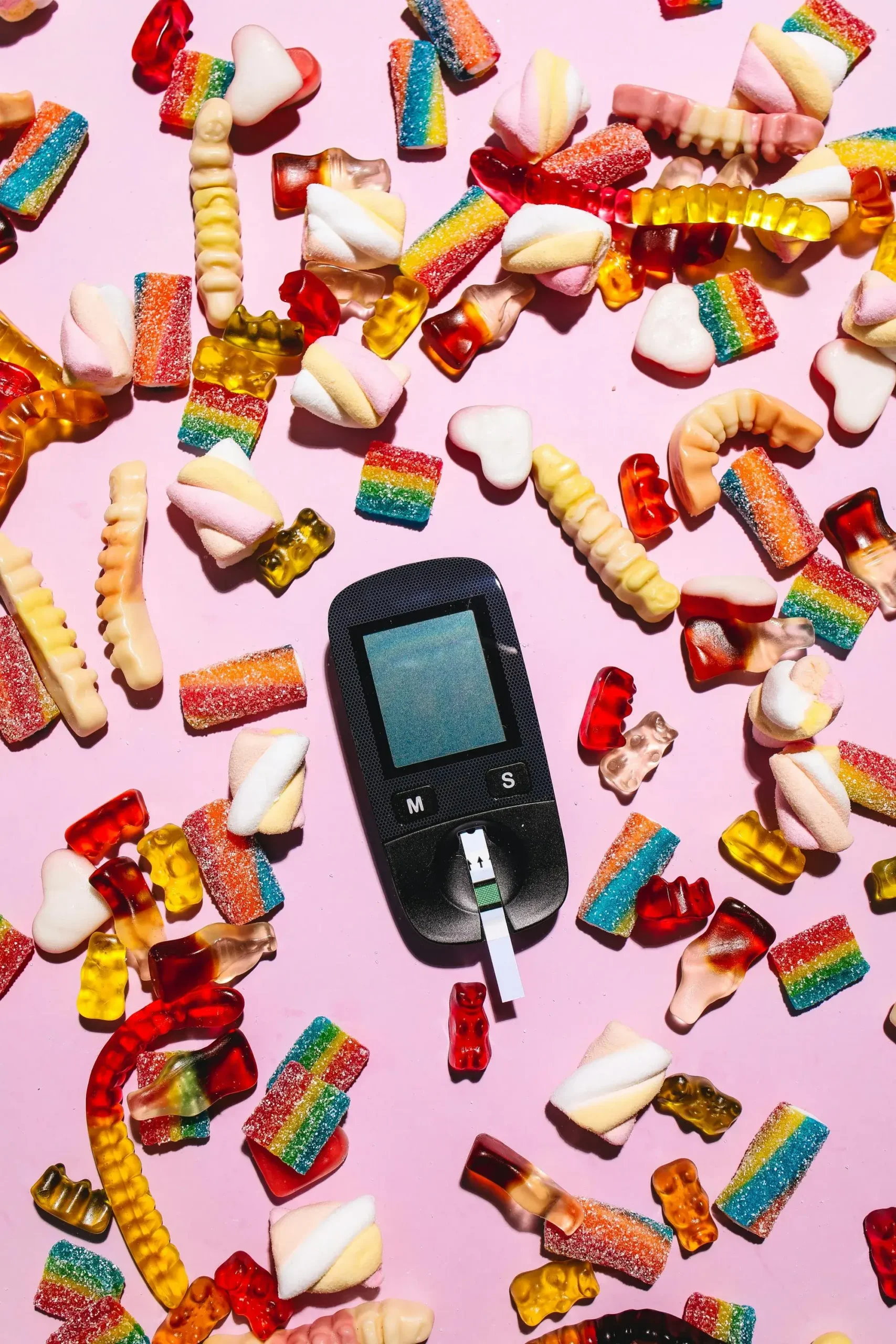Diabetic kidney disease, also called diabetic nephropathy, is a condition in people living with diabetes where high blood sugar levels damage the kidneys over time and cause them to malfunction.
Your kidneys keep you healthy by: filtering wastes and excess water from blood, regulating levels of minerals in your blood, regulating blood pressure, making the active form of vitamin D and playing a role in production of red blood cells.
Diabetic nephropathy can occur in people with type 1 or type 2 diabetes.
As the leading cause of chronic kidney disease and end-stage kidney disease worldwide, diabetic nephropathy is responsible for about one half of all cases. 20-50% of all people living with type 2 diabetes eventually develop diabetic nephropathy.
How does diabetes cause kidney disease?
Glomeruli are small filters in your kidneys made of small intertwined blood vessels. Each kidney has about half a million glomeruli. Glomeruli selectively allow water, wastes, glucose, and minerals to pass through them, and eventually these end up in urine.
When you have consistently high blood sugar levels, they may damage the blood vessels of your glomeruli. The glomeruli stop performing their work properly. Damaged glomeruli may become leaky and start to allow protein — which usually does not go through the glomerular blood vessels — into the urine. Damaged glomeruli may also stop filtering waste products and excess water, and this will cause them to accumulate in blood.
Also, high blood sugar levels affect blood vessels all throughout the body, and this increases the risk of developing high blood pressure. High blood pressure can also worsen kidney damage.
Who is at risk of developing diabetic kidney disease?
Anyone with diabetes can develop diabetic nephropathy. The longer you live with diabetes, the higher your chances of developing kidney disease. You are also more likely to develop diabetic nephropathy if you:
- Have poor control of your blood sugar
- Have high blood pressure
- Smoke
- Have high blood cholesterol levels
- Have family history of kidney disease
- Are obese
- Are African American, Native American or Asian American
What are the stages of diabetic nephropathy?
There are 5 stages of any kidney disease, including diabetic kidney disease. The stages depend on your eGFR, which is a measure of how well your kidneys are filtering substances from blood. The lower your eGFR, the more serious your kidney disease. The stages are:
[Table in book]
How do I know if I have diabetic kidney disease?
You may not have symptoms in the early stages of diabetic nephropathy. When your kidney disease is advanced, you may have symptoms like:
- Foamy urine
- Frequent urination, especially at night
- Fatigue
- Swelling of your feet, hands, and face
- Low back pain
- Decreased urination
- Nausea and vomiting
- Shortness of breath
- A need for smaller insulin doses to control your blood sugar. Healthy kidneys help in getting rid of insulin.
How is diabetic kidney disease diagnosed?
When you have symptoms of kidney disease, your doctor may recommend that you do certain tests to confirm kidney damage. Tests that may be used to diagnose diabetic nephropathy include:
Blood tests
- Serum creatinine. A blood sample will be taken from your vein and taken to the laboratory. The levels of creatinine, a waste product filtered by your kidneys, are obtained. Higher than normal levels mean that you have kidney disease.
- Using certain formulas, the serum creatinine levels can also be used to estimate your glomerular filtration rate(eGFR). The formulas may take into account your age, size, or sex.
Imaging tests
- Ultrasound scans, computed tomography(CT) scans and magnetic resonance imaging(MRI) tests can be used to check the size and shape of your kidneys. These can tell your doctor if diabetes has damaged your kidneys.
Urine tests
- Urine albumin test: Albumin is a protein that is not filtered by healthy kidneys into urine. Releasing too much albumin in your urine means your kidneys are damaged and leaky.
- Urine albumin to creatinine ratio(uACR): Urine creatinine is measured and used to calculate your uACR. A high uACR means you have kidney disease.
Kidney biopsy
- Under anesthesia, small samples of tissue can be collected from your kidneys and examined by a pathologist. Under a microscope, kidney damage caused by diabetes can be observed.
How is diabetic kidney disease treated?
Diabetic kidney disease cannot be cured, but it is possible to slow down the rate of kidney damage. The most important steps in treating diabetic nephropathy are controlling your blood sugar levels and blood pressure. Your diabetic nephropathy can be managed by:
- Managing blood sugar levels
Apart from preventing further kidney damage, controlling your blood sugar levels protects from other complications which can further worsen your overall quality of life. Your doctor will help you to determine what your blood sugar targets are.
There are many medications that can be used to reduce your blood sugars. Some of these medications may also reduce progression of kidney damage and your risk of having cardiovascular complications. These medications may include:
- Sodium-glucose cotransporter 2(SGLT2) inhibitors such as canagliflozin, dapagliflozin and empagliflozin.
- Glucagon-like peptide 1(GLP-1) agonists like exenatide, semaglutide and liraglutide.
Other ways to reduce your blood sugars include:
- Stopping smoking
- Losing weight, if you are overweight
- Exercising regularly
- Follow an appropriate diet plan. Certain foods can worsen your blood sugar levels, while others may not be good for your kidney health. It is essential to talk to a nutritionist who will guide you on how best you can stick to a diet that will be good for your kidneys and blood sugar control.
- Other medications
Your doctor may also prescribe other medications like:
- Angiotensin converting enzyme(ACE) inhibitors or angiotensin receptor blockers(ARBs). They are used to control your blood pressure and prevent further kidney damage.
- Statins can be used to lower your cholesterol levels.
- Finerenone. This is a medicine that can reduce kidney scarring and lower the risk of cardiovascular problems in people with diabetic nephropathy.
- Dialysis
When you have diabetes-associated end-stage kidney disease, dialysis and kidney transplantation may be the best treatment options to keep you alive. Dialysis is a procedure where waste products, excess fluid and toxins are removed from your blood when your kidneys can no longer perform these functions. The two types of dialysis are:
- Hemodialysis: Your blood is pumped out of your body into a dialyzer (artificial kidney) and then return after it has been filtered.
- Peritoneal dialysis: Dialysis solution is introduced into your abdomen via a catheter. The solution takes up waste products, excess fluid and minerals from the blood. After the process, the solution is removed via the same catheter.
- Kidney transplantation
In this procedure, you will receive healthy kidneys from a dead or living donor to substitute for your damaged kidneys. A transplanted kidney can be rejected by your body, that is why you and your donor will need to have tests done before the procedure is done.
What should I remember?
Diabetic kidney disease is a serious complication of diabetes that can lead to kidney failure if not properly managed. Early detection through regular screening and maintaining healthy blood
sugar and blood pressure levels are key to slowing its progression.
Taking control of your diabetes is essential to protecting your kidneys. With the right lifestyle choices, including a balanced diet, regular exercise, and close collaboration with your healthcare team, you can reduce the risk of diabetic kidney disease and maintain a better quality of life.











